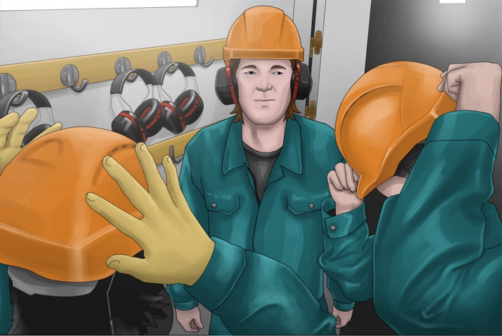Sometimes when things are going smoothly, it’s easy to get complacent and miss opportunities to improve.
Just like sailing on calm seas can lead to a false sense of security, skipping work debrief when the task or job went well can prevent you from identifying ways to enhance performance and safety.
But first, what on earth (or rather, sea) is a work debrief?
No, it’s not just another box-ticking exercise or report to write.
Work debrief or debriefing can take different names, so it can be confusing for some. But simply put, it is an informal conversation among team members after job completion.
It allows everyone to reflect on the job, discuss what went well and what did not, and share improvement ideas.

Overcome objections and create a culture of continuous improvement
In the recent Safety Delta annual reports that we generated, we noticed that work debriefs are not held regularly on board, unlike toolbox talks.
So in this article, we’re going to help you address the objections to conducting debriefs and motivate your team to make them part of your routine.
Here are the most common objections as well as some tips to overcome them.
“The job went well”
Ah, yes, the classic. But just because things seem to have gone smoothly doesn’t mean there aren’t areas for improvement. It’s like an iceberg – there might be hidden problems lurking beneath the surface.
So use debrief as a review and reflection tool. It helps you identify areas where things could be even better, as well as uncover hidden issues. In the process, you become more proactive and innovative.
💡 Tips:
“We’ve done the job several times before”
Even so, there could be new team members or different conditions that can lead to new ideas and lessons. When we do something repeatedly, we should be careful not to fall into the trap of complacency and overlook potential risks.
💡 Tips:
“We don’t have time”
A debrief doesn’t have to take long. In fact, even just a few minutes of informal conversation can yield valuable insights and prove to be a time well spent.
💡 Tips:
“Everyone’s already aware of what happened”
While team members may have witnessed the same events, they may have experienced or interpreted those events differently. By conducting debrief, your team can have a complete understanding of what happened.
💡 Tips:
“It’s only about fault-finding”
Some may perceive debrief as a discussion that highlights their mistakes and shortcomings (which can be demotivating). But that’s not the real goal. It’s about learning from the experience and celebrating successes too.
💡 Tips:
“Nothing happens, we don’t see improvements”
It takes time and effort to see results, and sometimes those results are not immediately visible. Nonetheless, they lay the groundwork for future success and help prevent potential problems from arising.
In fact, we have a client who witnessed a 50% improvement in safety performance after making debriefs part of their routine. 🙌
💡 Tips:
Experience the effects of work debriefs by turning ideas into actions

Remember to:
Client anniversary

Among Us is a monthly digital newsletter, primarily for Safety Delta members, but also for those who want to get a ‘sneak peek’ at the experiences gained by those of us who are already ‘insiders’. It also presents the developments of Safety Delta.

